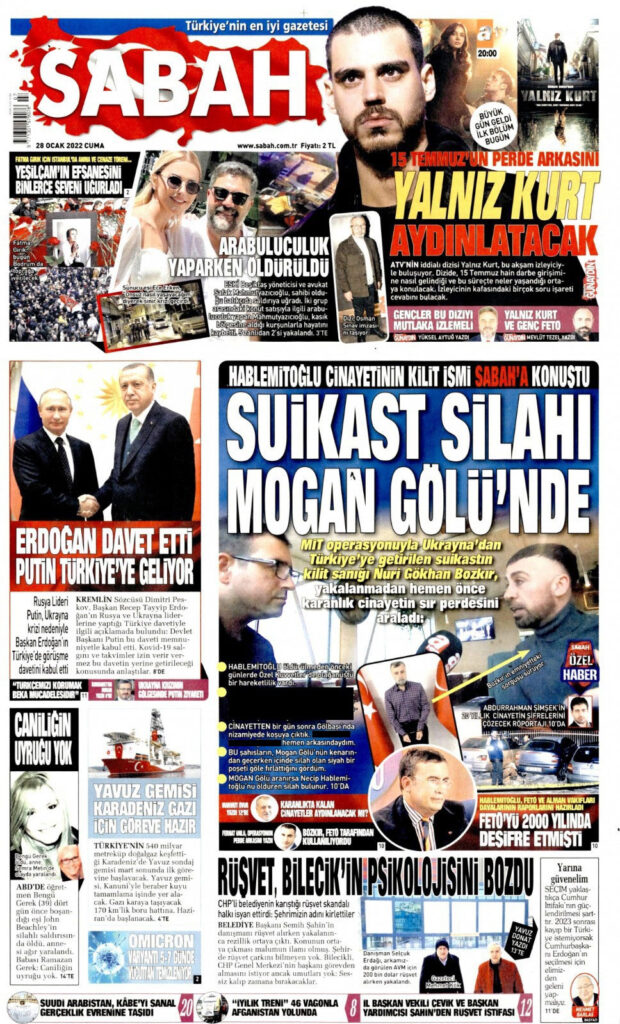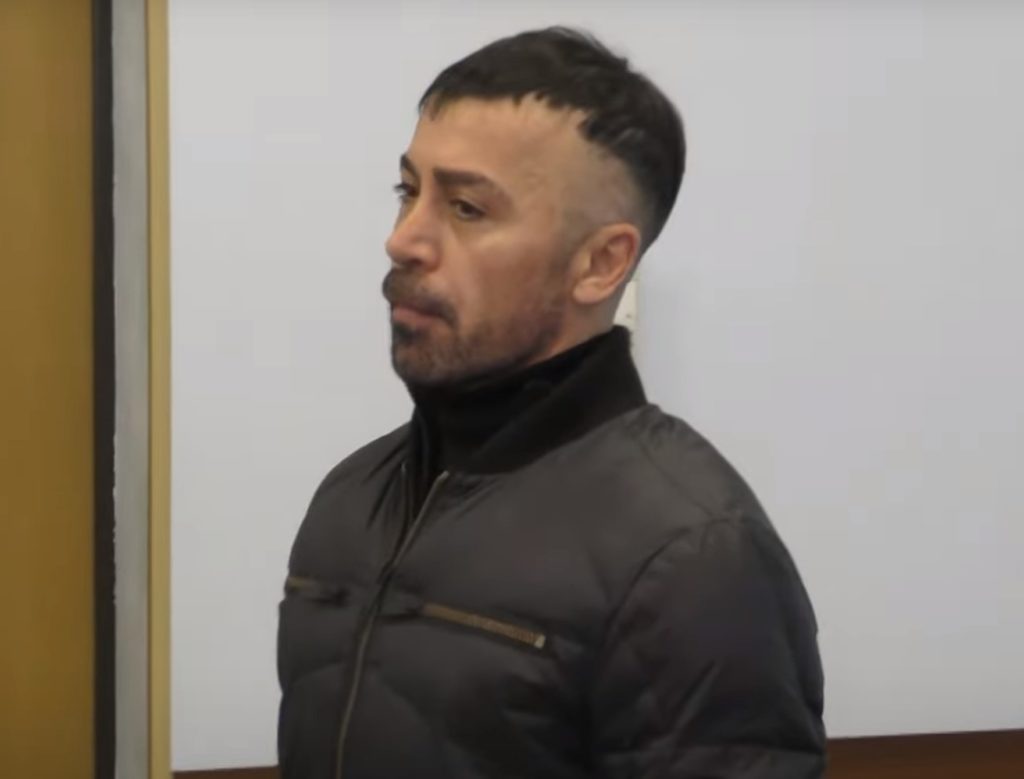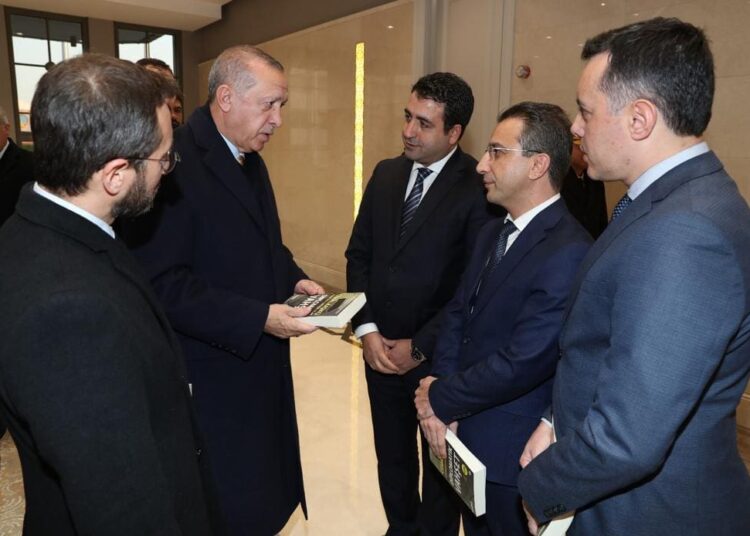Levent Kenez/Stockholm
During a trial concerning the murder of Necip Hablemitoglu, a neo-nationalist academic slain on December 18, 2002, startling revelations emerged in the courtroom on Monday about the connections to the Turkish intelligence agency (MİT) of a journalist who testified as a witness.
The assassin of Hablemitoğlu, who was fatally shot in front of his residence in Ankara, has never been captured. His murder, initially blamed on religious groups or German intelligence because of the academic’s campaign against German foundations and companies that were interested in investing in Turkey’s forests, the murder is now suspected to be connected to a clandestine group led by Special Forces in the Turkish military.
The Hablemitoğlu murder investigation took a significant turn following the testimony of Gökhan Nuri Bozkır, a former Special Forces member who confessed to his involvement in the assassination. Bozkır revealed to a public prosecutor that he conducted surveillance around Hablemitoğlu’s Ankara residence upon receiving a covert directive from his superior. Furthermore, he admitted to escorting the assailant to the location and aiding in his escape following the murder.

During the hearing on Monday, Sabah newspaper journalist Abdurrahman Şimşek faced criticism from defense attorneys for responding to questions about his reports, which were published while a gag order was in place.
Şimşek was also questioned about where he obtained a photo of former officer and later MİT employee Tarkan Mumcuoğlu, the suspected hitman in the murder. Şimşek initially claimed that he found it in open sources. However, when the lawyers said the photo was taken when Mumcuoğlu was hired by MİT and was not present in any public sources, Şimşek later changed his testimony and said, “I received it from a news source.”
In an intriguing development during the hearing, Şimşek had difficulty addressing another question regarding an interview conducted with Bozkır while he was in Ukraine.
The interview was published in the Sabah newspaper on January 28, 2022, shortly after Bozkurt’s extradition to Turkey by Ukrainian authorities. Şimşek asserted in court that the interview had taken place just 10 days before Bozkır’s return to Turkey. However, Bozkır disputed this claim, insisting that the interview actually occurred on February 20, 2020. In an attempt to confirm the date, Şimşek searched for his flight records on his cell phone, but to no avail. Eventually, Şimşek reluctantly acknowledged that the interview had indeed taken place on February 20, 2020.

Later, Bozkır claimed that Şimşek, whom he accused of being a government informant, had told him, “Why don’t you come to Turkey? You’ll spend two years in prison and then be released.” Bozkır claimed that Şimşek lied about his telling Şimşek that Mumcuoğlu was the killer. Bozkır claimed that the conversation at a café was monitored by Ukrainian intelligence, with recording device, stating that he would request the recordings from the Ukrainian government.
Şimşek, upon questioning by the lawyers, admitted to having privately met once with Zafer Ergün, the prosecutor who drafted the indictment. He said this courtesy visit took place after his meeting with Bozkır in Ukraine. Şimşek also claimed that he obtained information about the case from the former prosecutor, Necip Cem İşçimen, in 2017. However, the lawyers disputed Şimşek’s statements, pointing out that many of the details he had written about or discussed were not found in İşçimen’s file. They accused Şimşek of deceiving the court and requested that he be recommended for prosecution.
According to a previous report by Nordic Monitor, Turkish intelligence agency MİT has been utilizing journalism as a facade to infiltrate and gather intelligence in foreign countries. Multiple sources, well-versed in MİT’s methods, revealed that the agency dispatches its agents and resources under the guise of journalism to conduct espionage activities.
Leaked emails of President Erdogan’s son-in-law Berat Albayrak revealed in 2016 that MİT was feeding information to his agents planted in the Sabah daily, owned by Erdogan’s family. Emails from 2012 showed that Şimşek, Ferhat Ünlü and Nazif Karaman were in the loop and receiving information from the agency.
Ünlü wrote several books promoting MİT and how the agency had successfully carried out espionage operations under former chief and now foreign minister Hakan Fidan. For several years now Şimşek has been working with a team of MİT agents in hunting down investigative journalists who fled Turkey to escape wrongful imprisonment by the Erdogan regime. The secret photos, home addresses and daily routines of journalists in the US and Europe, apparently obtained as part of long-running surveillance programs, were published in the Sabah daily by Şimşek and his colleagues in the spy agency.
At the direction of MİT, this trio wrote a book in December 2018 on the murder of Saudi journalist Jamal Khashoggi, who was assassinated by Saudi government operatives at the Saudi Consulate General in Istanbul on October 2, 2018. The information surrounding the murder was provided by MIT, which had bugged the consulate before sending Khashoggi and his Turkish fiancée there as part of the Erdogan government’s move to gain leverage over Saudi Arabia.
Bozkır, the only defendant detained in the case, was released on bail in May 2023. However, a week later, he was sentenced in another case to almost 22 years in prison for his alleged involvement in arms trafficking to jihadist groups in Syria, but he remained at large until January 2, when he was apprehended.

President Erdogan previously announced in a live TV broadcast that Bozkır was brought back to Turkey from Ukraine in January 2022 through the efforts of MİT. There have been frequent media reports alleging that Erdogan has used the Hablemitoğlu case as a bargaining chip and a tool to threaten certain neo-nationalist elements critical of him.












